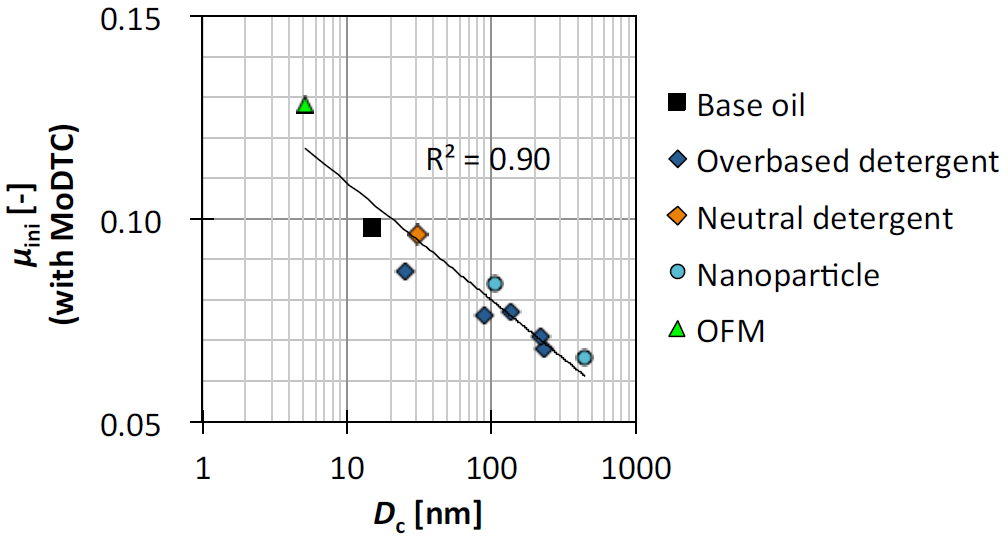revealed the threshold of surface separation distance that drastically changed shear response. When the distance was below this threshold, effective viscosity was more than ten times higher than bulk viscosity measured by a capillary viscometer. This threshold, which we called critical distance, varied between detergents from tens to hundreds of nanometers. We found that critical distance correlated with friction coefficient at 5 min (initial friction coefficient) measured by a friction tester. Dynamic light scattering experiments showed that grain size of detergents was consistent with critical distance. These results suggested that shear stress based on steric effects of detergents facilitated MoDTC-induced tribochemical friction reduction.
To test this hypothesis, we performed same experiments using non-detergent nanoparticles instead of detergents. Detergents were substituted to colloidal silica dispersion or carbon black powder. These nanoparticles showed same tendency as detergents on both macroscale friction and microscale shear response. Therefore steric effects sufficiently explain the influences of detergents on initial friction coefficient and critical distance. Moreover, we decreased shear stress by using an organic friction modifier (OFM). The friction test showed that OFM increased initial friction coefficient. Hence shear stress is considered responsible to MoDTC-induced friction reduction. Figure 1 shows the relationships between initial friction coefficient measured by a macroscale friction tester and critical distance measured by SFA-RSM for all the experimental results in this study. These two values strongly correlated.
These results lead us to the conclusion that detergents facilitate MoDTC-induced friction reduction through shear stress under interfacial confinement. We consider that this concept is applicable for a broader range of tribochemical processes. Nanoparticle-based control of these processes may be beneficial for next-generation design of lubricant formulation.

Figure 1 – Relationships between critical distance Dc measured by SFA-RSM and initial friction coefficient μini measured by a macroscale friction tester.
REFERENCES: 1. Isoyama and Sakurai, Tribol. Int. (1974), 2. Grossiord et al., Tribol. Lett. (2000), 3. Gosvami et al., Science (2015), 4. Zhang and Spikes, Tribol. Lett. (2016), 5. Spikes, Friction (2018), 6. Dushkin and Kurihara, Colloids Surf. A: Physicochem. Eng. Asp. (1997), 7. Sakuma et al., Phys. Rev. Lett. (2006), 8. Mizukami and Kurihara, Rev. Sci. Instrum. (2008).